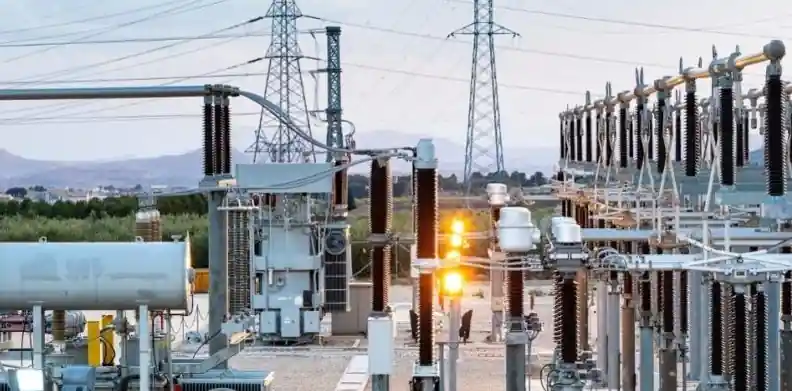In today’s rapidly expanding power distribution sector, 500 kVA compact substations have emerged as a vital component for medium- to low-voltage transformation in urban, industrial, and renewable energy settings. These prefabricated substations combine efficiency, compactness, and enhanced safety—all in a single integrated solution. In this article, we explore the key technical features, applications, market trends, and expert advice for selecting the right 500 kVA compact substation for your project.
What Is a 500 kVA Compact Substation?
A 500 kVA compact substation is a self-contained unit designed to transform medium voltage (typically 11kV or 22kV) to low voltage (400V/230V), using a 500 kVA rated distribution transformer. It includes:
- MV switchgear for incoming medium-voltage supply
- 500 kVA distribution transformer
- LV switchboard for low-voltage distribution
- Weatherproof enclosure providing protection from environmental factors

These substations are factory-assembled, tested, and delivered to the installation site ready to connect, making them a plug-and-play solution for modern power distribution systems.
Applications of 500 kVA Compact Substations
500 kVA substations are commonly used in:
- Commercial complexes (shopping malls, office parks)
- Small and medium industrial facilities
- Urban infrastructure projects
- Educational institutions and hospitals
- Renewable energy plants (solar, wind)
Their capacity is well-suited to support moderate energy loads while maintaining high reliability, especially in areas with space constraints.

Market Trends and Industry Adoption
Driven by global infrastructure growth and the need for decentralized power solutions, the compact substation market has witnessed significant growth. According to the IEEMA 2023 Report, the demand for modular substations in the 250–1000 kVA range is growing at over 5.6% CAGR globally. Countries in Asia, Africa, and Latin America are leading this adoption due to urbanization and electrification initiatives.
Companies like ABB, Schneider Electric, and Siemens have also introduced smart features such as SCADA integration, IoT sensors, and remote monitoring into their compact substation offerings—further expanding their appeal.
For technical background and comparison, refer to Wikipedia: Electrical Substation, which provides useful insights on the evolution of substation technology.
Key Technical Specifications
Below is a sample of typical specifications for a 500 kVA compact substation:
| Parameter | Typical Specification |
|---|---|
| Rated Power | 500 kVA |
| Primary Voltage | 11kV / 22kV / 33kV |
| Secondary Voltage | 400V / 230V |
| Frequency | 50Hz / 60Hz |
| Transformer Type | Oil-immersed or Dry-type |
| Cooling Method | ONAN (Oil Natural Air Natural) |
| Enclosure Protection | IP54 or IP65 |
| Standards | IEC 62271-202, IEC 60076, IS 14786 |
| Ambient Temperature Range | -25°C to +50°C |

Advantages Over Conventional Substations
Compared to traditional substations built onsite, the compact substation offers several distinct benefits:
- Reduced footprint: All-in-one design occupies less space
- Shorter installation time: Delivered fully assembled
- Lower civil work costs: No need for dedicated control rooms or cable trenches
- Enhanced safety: Fully enclosed with arc-fault containment
- Ease of relocation: Can be dismounted and redeployed if necessary
How to Choose the Right 500 kVA Substation
Here are key points to consider when selecting your 500 kVA compact substation:
- Voltage Class: Match with utility supply (11kV, 22kV, or 33kV)
- Transformer Technology: Choose dry-type for indoor/sensitive areas; oil-immersed for better cooling outdoors
- Installation Environment: Ensure enclosure rating is suitable (IP54/IP65)
- Load Profile: Analyze current and future power needs
- Compliance: Verify that the substation meets IEC, IS, or IEEE standards
- Customization Options: Some suppliers offer digital metering, protection relays, or solar-ready versions
Working with manufacturers such as PINEELE, Schneider, or ABB ensures quality assurance and post-installation support.
Referenced Standards and Authority Sources
- IEC 62271-202: High-voltage/low-voltage prefabricated substations
- IEEE Std 141™: Electric power distribution for industrial facilities
- IEEMA Reports: Annual trends on compact and modular substation equipment
- Wikipedia – Electrical Substation: General overview and technical references
These resources are essential for professionals engaged in specification writing, procurement, or design planning.
FAQs
A: Yes. Many solar and wind developers use 500 kVA compact substations as step-down units in distributed generation networks. Their modularity makes them ideal for rapid deployment.
A: Yes, provided it’s a dry-type transformer and the enclosure meets indoor safety codes. Proper ventilation and fire protection are essential.
A: With proper maintenance, the typical lifespan is 25–30 years. Regular inspections of insulation, oil levels, and switching mechanisms help maximize service life.
The 500 kVA compact substation is a smart and scalable solution for medium-voltage to low-voltage power transformation. Its compactness, reliability, and quick installation make it ideal for projects with tight timelines or spatial constraints. With growing demand across sectors—from commercial to renewable—this substation size will remain a mainstay in modern power systems.